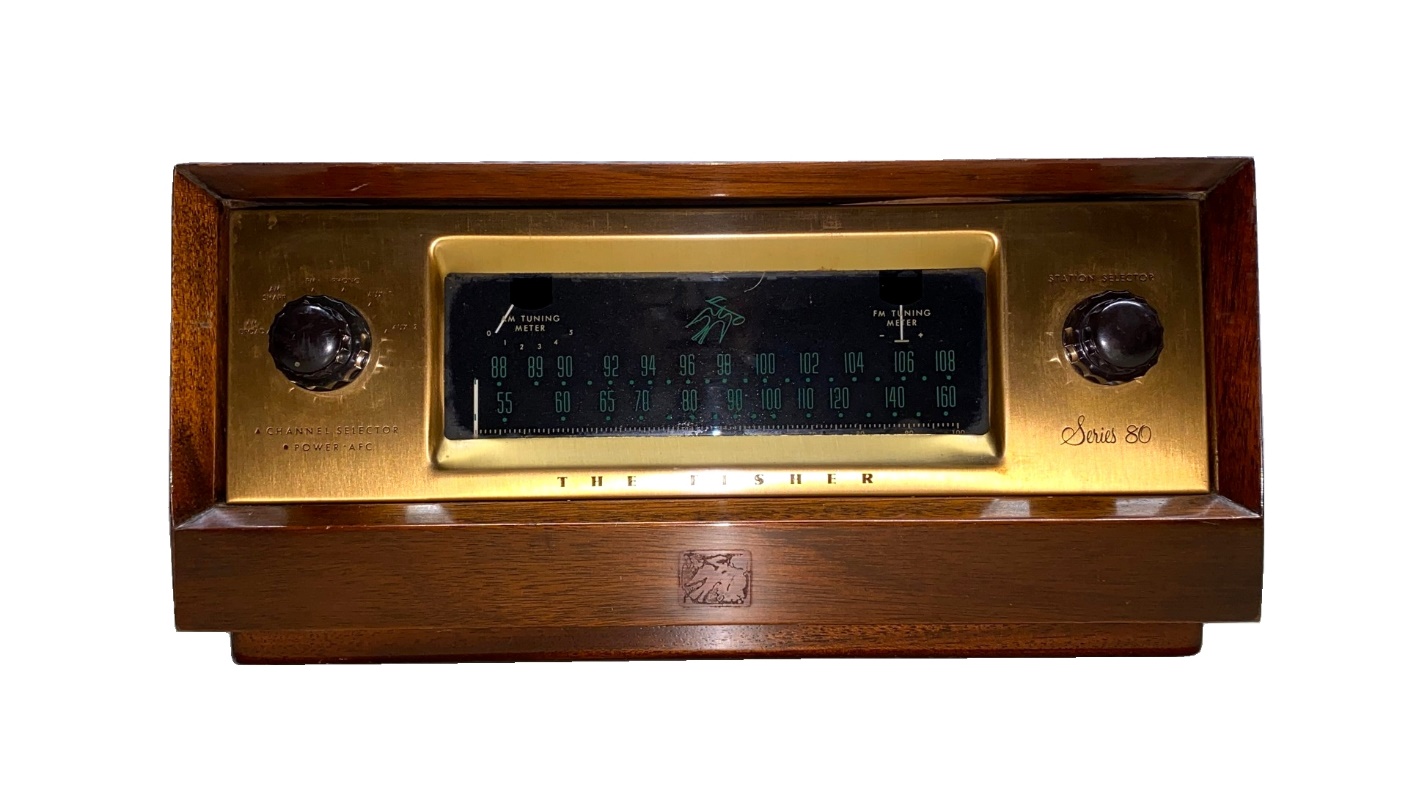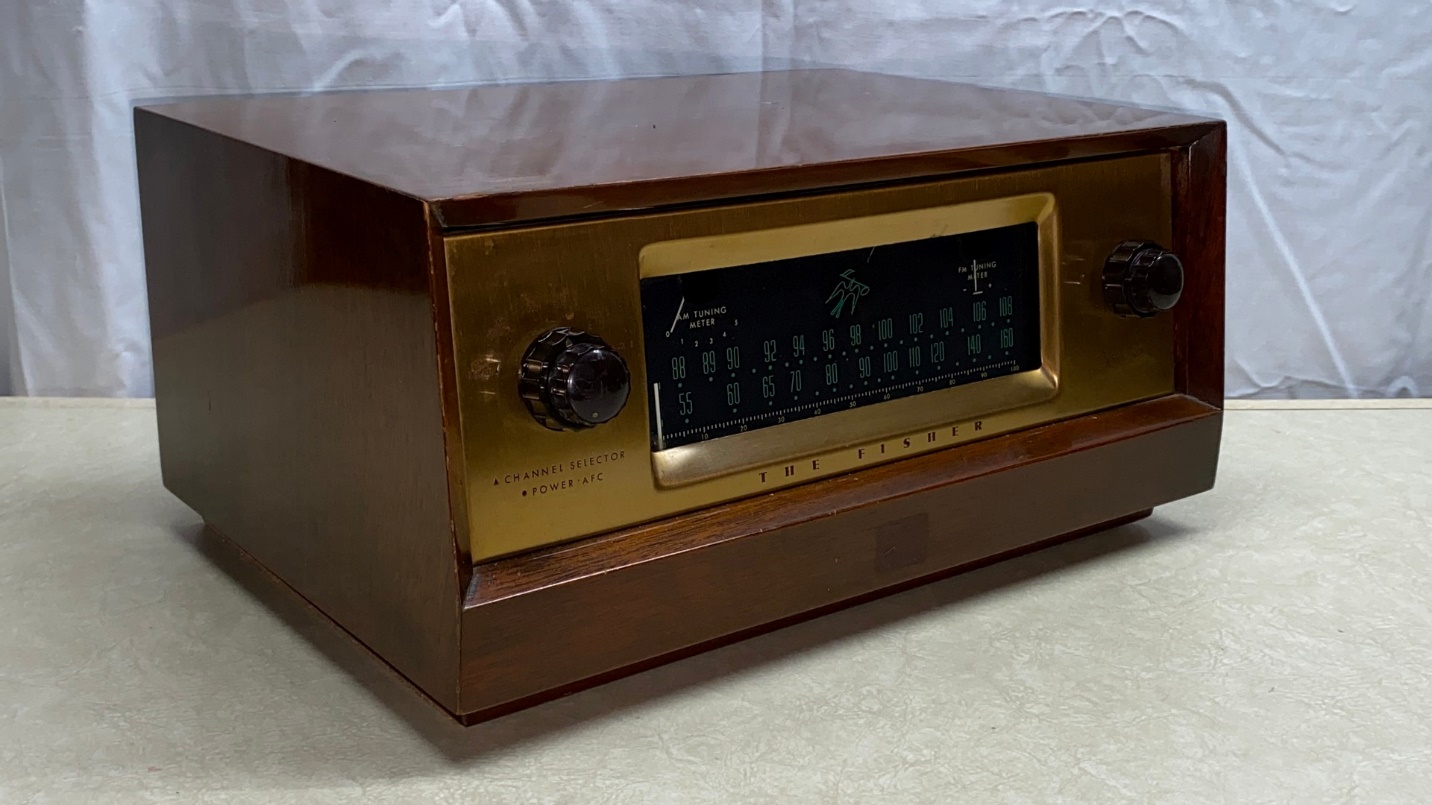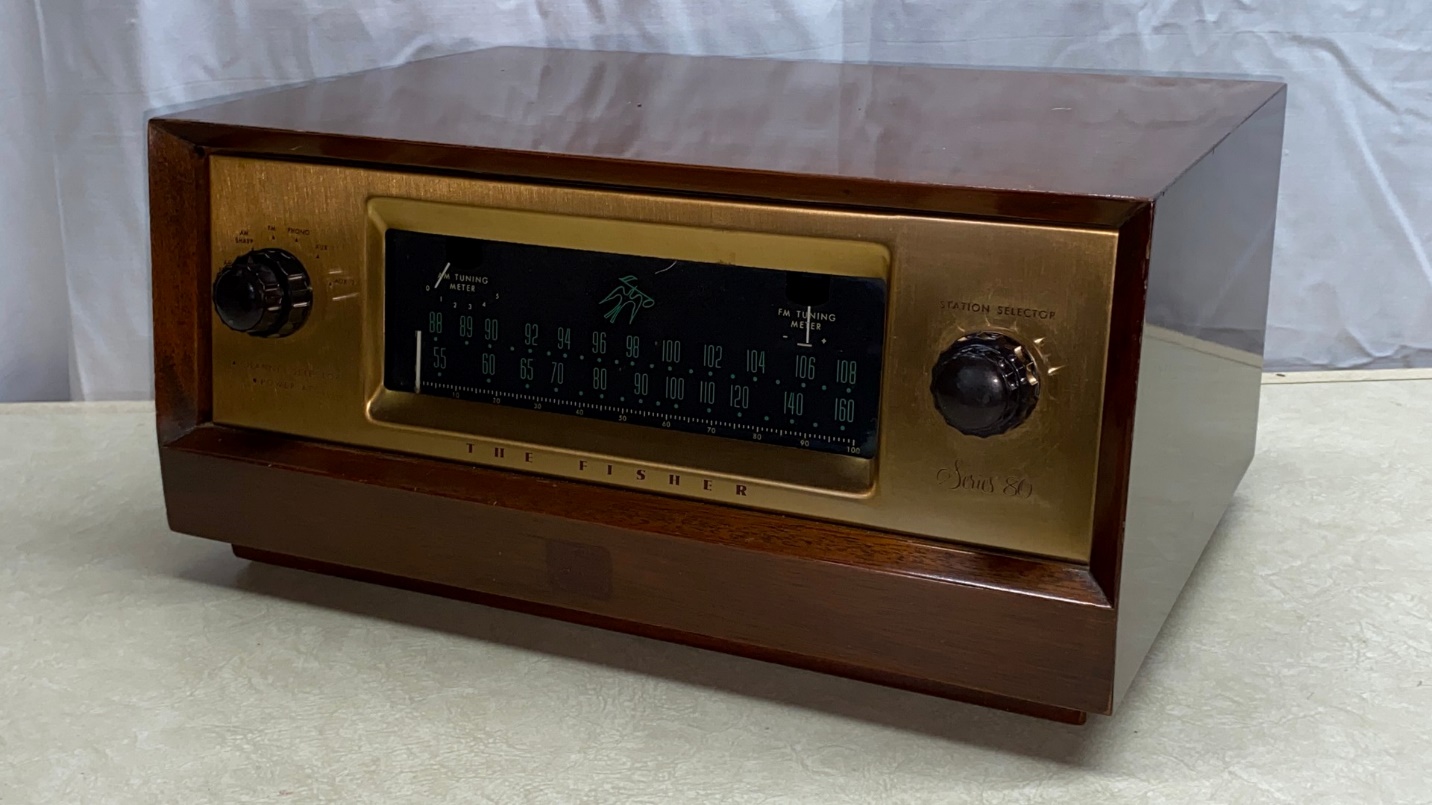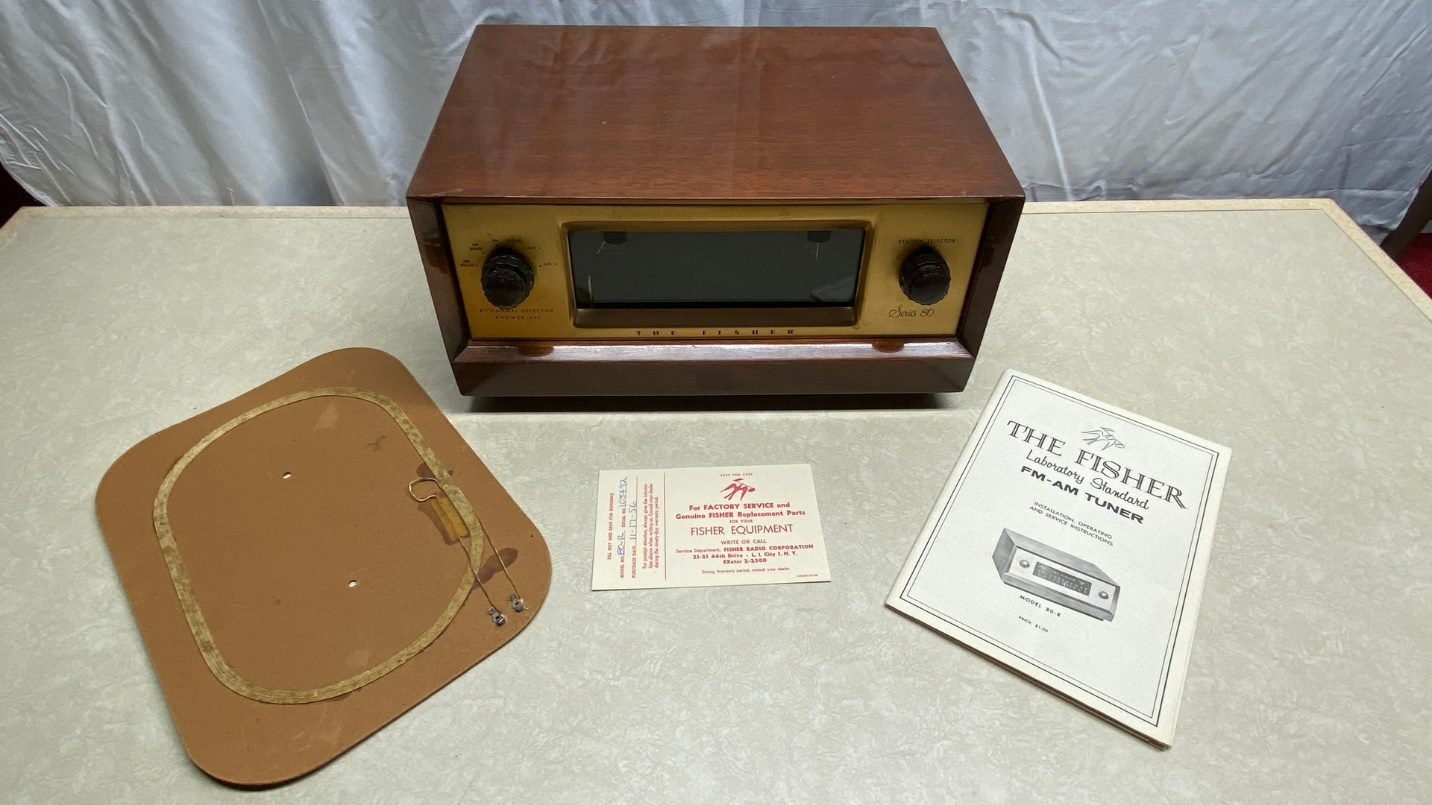
It was the mid-1950s. Hi-fi audio was very popular. Stereophonic sound was still a faraway dream for most people, even though there were prerecorded stereo audio reel-to-reel tapes available by now for the relatively few who had made the (expensive) investment in a stereo tape deck, along with two mono amplifiers and two sets of speakers.
Fisher Radio was busy selling its Series 50 and Series 70 lines of high-fidelity equipment when they dropped a new product, and the beginning of a new Series line, in late Fall 1954. The all-new FM-80 included two tuning meters – one to indicate signal strength, the other to indicate center of channel. The center channel meter would be come more common for FM tuners and receivers in years to come.

The Fisher 80-R “Series 80” AM/FM Tuner
Slowly, over the course of the following year, Fisher introduced new “Series 80” components: the 80-C Master Audio Control (preamplifier) in mid-summer 1955; followed by the new 80-R AM/FM tuner and the 80-T AM-FM tuner with Master Audio Control in Fall 1955. The 80-AZ monoblock amplifier and the AM-80 AM tuner followed in late Fall 1955. The AM-80 has an excellent reputation as one of the best AM tuners ever made. Now, with an AM-80 and an FM-80, two amplifiers, and two sets of speakers, the listener could be ready for the coming AM-FM simulcast stereo broadcasts which would soon be available in some cities.
But I digress. The subject of this post is a very handsome 80-R which I recently purchased. It included the factory mahogany cabinet and the price was right, so I decided to try out a Fisher product which is outside my normal timeline of Fisher interest (1958-1963).

Another view of the 80-R
The seller included the original owner’s manual which also included factory directions for installation in a custom cabinet. The original warranty card was also included, which indicated the original owner purchased this particular 80-R on November 17, 1956.
The original factory cabinet has its original gloss finish and looks great, in spite of a blemish on top plus the absence of the original Fisher “bird” medallion which had originally been placed at lower center of the cabinet front.

The tuner included not only the optional cabinet, but also the AM loop antenna, warranty card and owner’s manual
It was sold as working on FM but not on AM. As the original AM loop antenna was included but is not connected, it is not surprising that AM is not working. I have yet to try this tuner out, and I would really prefer not to until I have, at least, replaced its electrolytic capacitors and tested its tubes.
When I have more time, I am looking forward to digging into this 80-R and restoring it to proper operation.